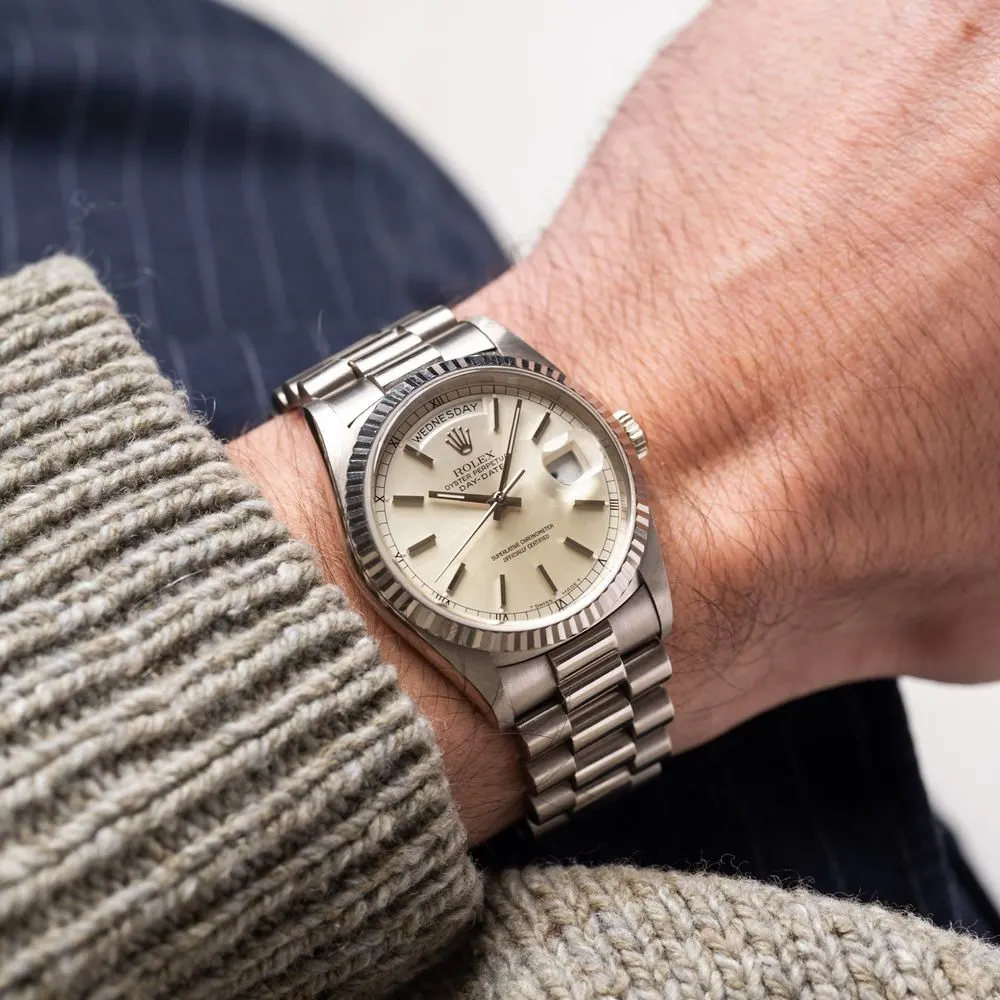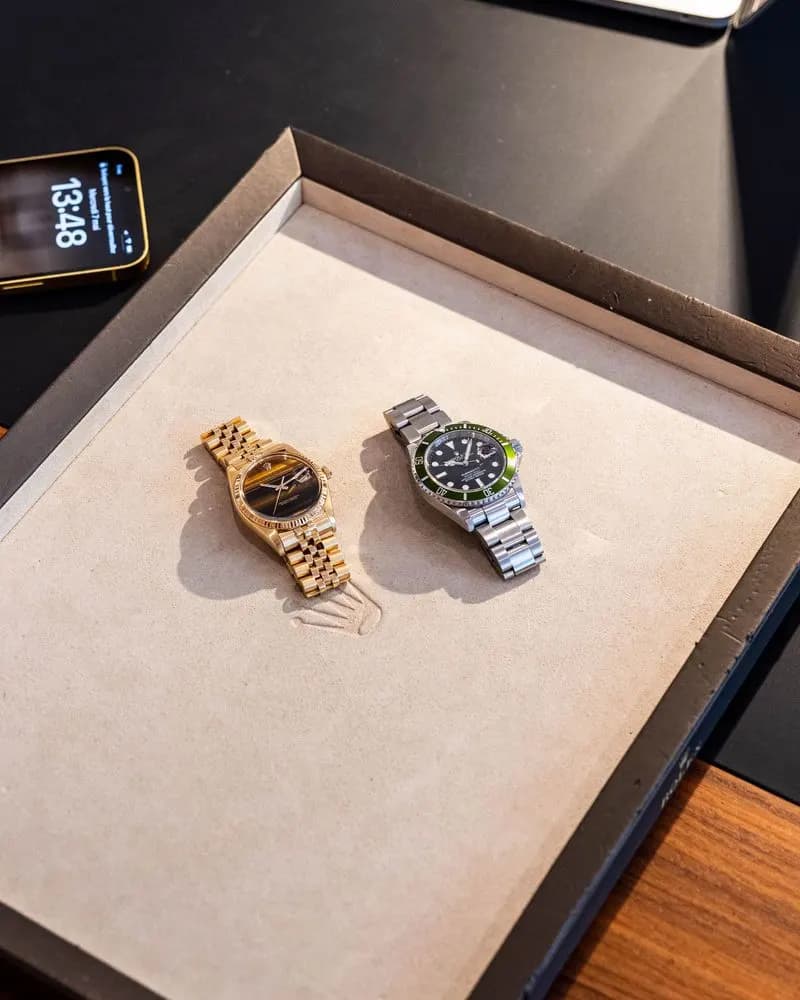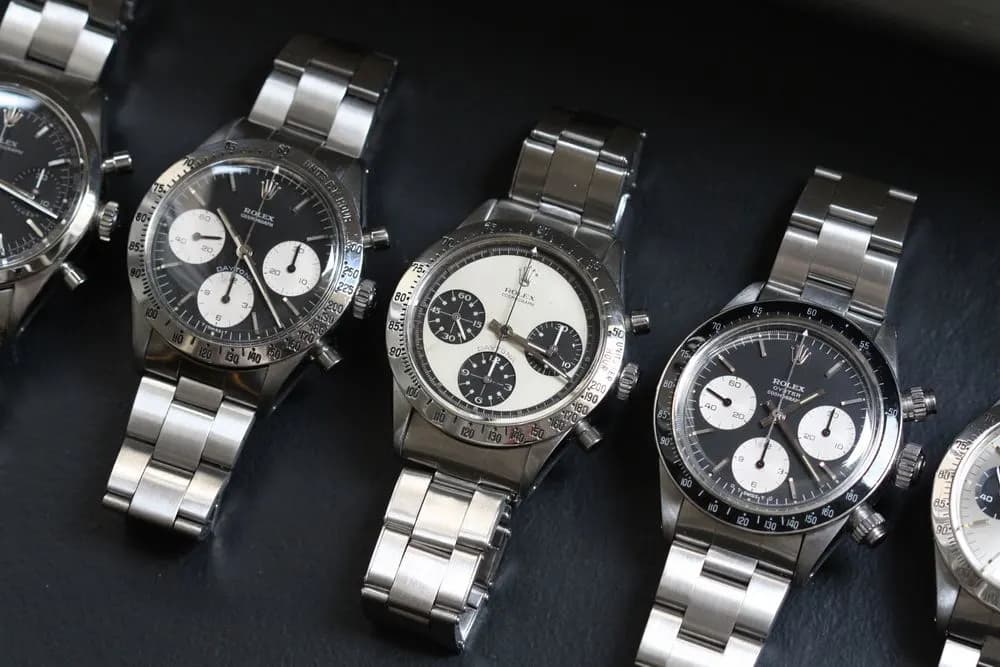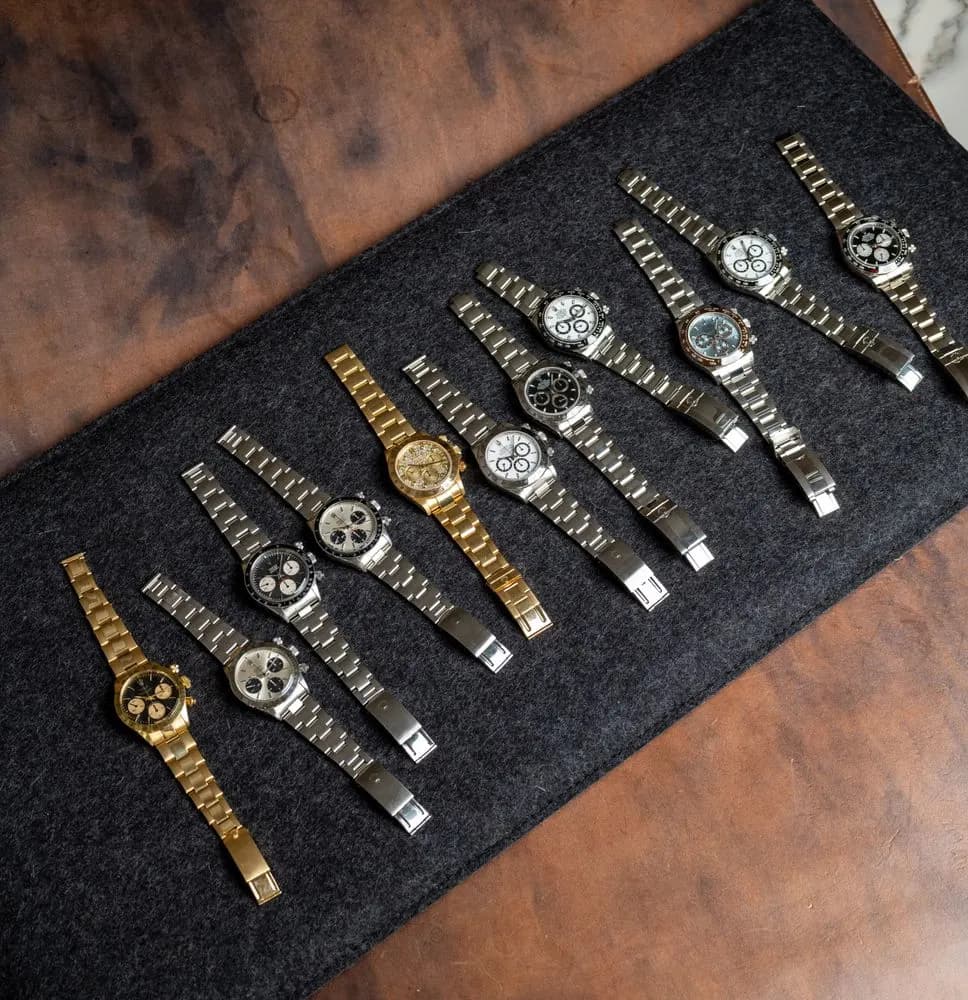From the first references of the famous Rolex Submariner, the watches were equipped with an "Oyster" bracelet.
What we now call the Oyster bracelet was not invented by Rolex but by the company "Gay Frères," a bracelet manufacturer that worked at the time for the biggest Swiss watch brands, including Rolex. It was only later, especially after Rolex acquired Gay Frères in 2001, that the official terms "Oysterclasp," "Oysterlock," "Oystersteel," and "Oyster" became a true Rolex trademark...
These same bracelets were also used for other Rolex sports models, such as the GMT Master, the Explorer, and the Turn-o-graph. The first "Oyster" bracelet created by Gay Frères was the famous riveted Oyster bracelet.

Riveted bracelet made by Gay Frères (Rolex advertisement illustration of the reference 6204 from the 1950s).
The Birth of the Riveted Oyster Bracelet
Without any idea of the future popularity of these bracelets, Gay Frères had just developed them to equip the sports watches of the time. Nowadays, collectors give much more importance to the riveted bracelet of their 1950s Submariner than to a solid Oyster bracelet. Interestingly, in the 1950s, Oyster bracelets did not have the durability of today's versions. In fact, these bracelets were not yet perfect, despite their elegant design. Due to the lightness of the metal (hollow links), the bracelets tended to loosen quickly, and the clasps would break relatively easily. Nevertheless, riveted bracelets were the best available at the time and were considered relatively expensive accessories.
Gay Frères was not the only manufacturer of Oyster bracelets for the brand. For reasons of export and customs costs, Rolex also ordered bracelets (of slightly lower quality) from foreign manufacturers. This was mainly the case for watches imported to the United States, the United Kingdom, Japan, and Mexico.
The most well-known of these manufacturers was C&I, based in the United States, which produced significant quantities for about two decades starting in 1959. These bracelets had thinner hollow rivets and lighter steel than those supplied by Gay Frères. Notably, these bracelets featured two distinctive signs: they were equipped with unmarked endlinks and were not as well-fitted to the case shape.
The Different Rolex Bracelet Manufacturers

Rolex 20mm Bracelets (1953-1978)

Swiss 20mm Riveted Bracelets (Circa 1953-1969)

USA 20mm Riveted Bracelets (Circa 1958-1978)
Some of the early riveted bracelets, both American and Swiss-made, were equipped with spring-loaded expandable links. This well-intentioned feature was not widely used because it was unreliable and relatively weak, not to mention the complexity of manufacturing it entailed. Rolex completely abandoned this concept for the next generation of bracelets, which we now call folded link bracelets.
Almost all clasps on Swiss- and US-made bracelets bear a reference number and year on one of the springs. These markings were intended for quality control purposes, much like the date codes on casebacks.

Extendable US-made Bracelet

Date on the clasp spring (1 for first quarter, 59 for 1959)

"Big Logo" US-made Bracelet (C&I)
The "Big Logo" riveted bracelet is named after the large and intricate floral designs on the clasp spring. They were produced for Oyster and Jubilee bracelets for only a few years, from 1958 to 1960.
Big Logo clasps were also mounted on "Jubilee"-style bracelets and used for other Rolex models, notably the GMT Master. Big Logo clasps were also made for 18K gold versions.
In 1961, Swiss-made Rivet bracelets began to feature reference numbers on the last link of the bracelet (large link at 12 o'clock). The reference numbers 7206 (fixed links) and 6636 (expandable links) were introduced. It is worth noting that US-made riveted bracelets did not have stamped reference numbers.
The Production of Various References
| Reference |
Endlink |
Link Type |
Production |
Specific Model |
| 64 |
Fixed |
Riveted |
Circa 1953-1958 |
|
| 65 |
Fixed |
Riveted |
Circa 1953-1958 |
|
| 80 |
Fixed |
Riveted |
Circa 1958-1969 |
|
| 58 |
Fixed |
Riveted |
Circa 1958-1969 |
|
| 258 |
Fixed |
Folded |
7836/9315 (from 1969) |
|
| 358 |
Removable |
Folded |
7836/9315 |
|
| 280 |
Fixed |
Folded |
7836/9315 |
|
| 380 |
Removable |
Folded |
7836/9315 |
|
| 282 |
Fixed |
Folded |
7836/9315 |
|
| 382 |
Removable |
Folded |
7836/9315 |
Tudor Chronograph |
| 285 |
Fixed |
Folded |
9315 |
|
| 385 |
Removable |
Folded |
9315 |
Sea-Dweller |
| 580 |
Removable |
Solid |
78360/93150 |
|
| 585 |
Removable |
Solid |
78360/93150 |
Sea-Dweller |
Adding or removing links to adjust the bracelet size on any riveted or folded link bracelets should only be done by a specialist. These links can break quite easily, or it may create significant play in the bracelet. Only starting with solid links did Rolex introduce a removal screw system, allowing the addition or removal of one or more links with a screwdriver (of the appropriate size).
For practical reasons, mainly for Rolex after-sales service, the bracelets made over the years—folded and solid—will be adaptable not only to their contemporary watches but also as replacements for all prior models.
Thanks to "rolexhaven" for the photos.














